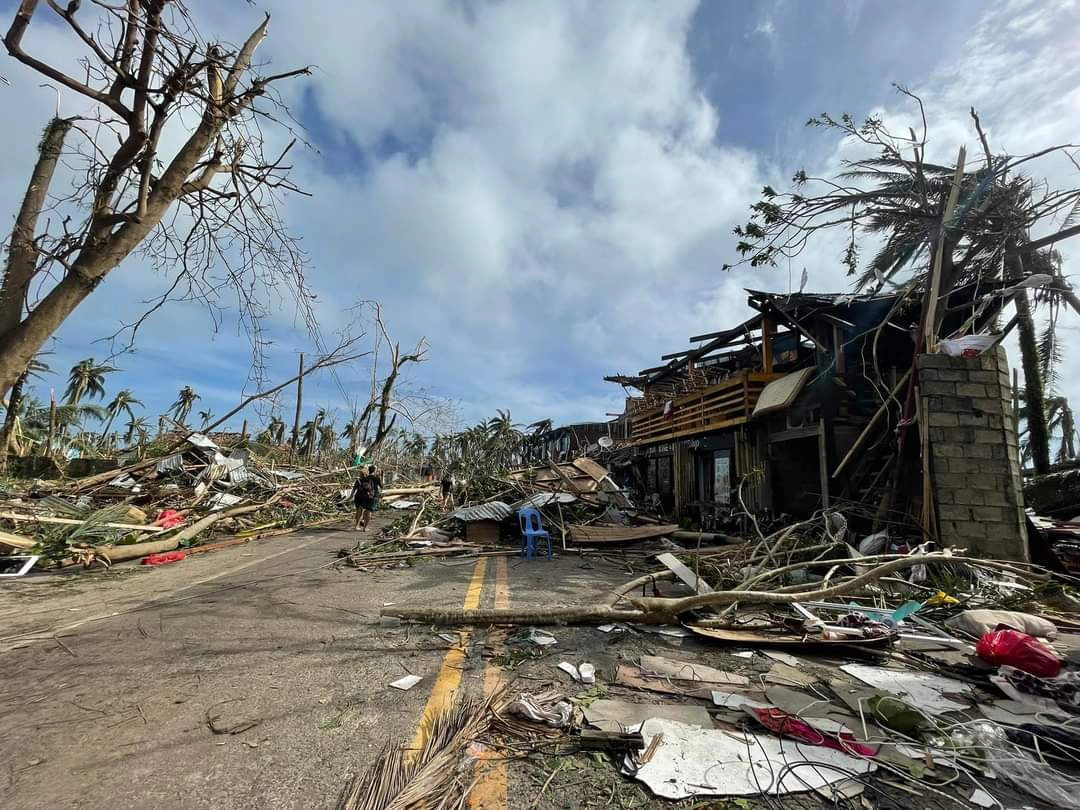Media Centre - 20 December 2021
Plan International responds to communities affected by Super Typhoon Rai

Plan International is responding with relief supplies in communities hard-hit by super typhoon Rai (Odette). The child rights and humanitarian organisation, along with partners, is providing emergency response to communities submerged with floodwater and with no power, in Visayas and Mindanao.
More than 200 people have been reported to have died due to Rai, with that number expected to rise. Most were hit by falling trees and collapsed walls, drowned in flash floods or were buried in landslides, according to reports.
Almost 2 million people are estimated to have been affected by the typhoon, with 400,000 people requiring urgent relief and long-term support, including housing and livelihood assistance.
Super typhoon Rai (Odette) began passing over the Sulu Sea, between the Cuyo and Cagayancillo islands in Palawan early Friday morning, December 17. Rai (Odette) has made landfall eight times so far, causing massive floods and leaving a trail of destruction through areas in Surigao del Norte, Dinagat Islands, Southern Leyte, Bohol, Cebu, and Negros Oriental.
“Children are among the most vulnerable when disaster strikes, especially now with the risk of COVID-19,” says Plan International Philippines Country Program Manager for Emergency Preparedness and Response, Telesforo Laplana. “It is important to address the specific needs of children and ensure that families and communities are also protected from the risk of Covid-19 amid the emergency response.”
Two Plan International Emergency Response Teams are now deployed in affected areas, with a further team ready for dispatch from Cotabato City.
The teams have prepared over 10 thousand lifesaving non-food items, such as menstrual hygiene management kits, hygiene, shelter, and water kits prepositioned for distribution to families in the most affected areas of the typhoon.
“We are coordinating with national and local government agencies, UN bodies, and other humanitarian and non-government organisations to assess the needs of affected communities and families, especially children and young people,” adds Laplana.
The National Disaster Risk Reduction and Management Council (NDRRMC) reports that the typhoon has affected 12 out of the country’s 17 regions. The most devastated are Regions 6, 7, 8, and 10. Flooding and damaging winds has been reported in several provinces and cities, namely: Cagayan de Oro City, Cebu City, Misamis Oriental and Negros Oriental.
In Bohol, according to officials, Rai (Odette) has caused around PHP 5 billion worth of damages in the province. Siargao Island, where the typhoon made its first landfall remain isolated as the communication networks are currently still down. Surigao City (est. population of 150,000) has already expressed its need for aid as their mayor expects severe damages. Southern Leyte, an area previously covered by Plan International Philippines, has also suffered extensive damages due to flood and heavy wind.
Super typhoon Rai (Odette) brought heavy rains and flooding that displaced thousands of Filipinos over large areas of Visayas and Mindanao.
During the NDRRMC Press Briefing on Friday morning, officials admitted that information on damages and casualties is incomplete at this point, as they are unable to contact staff to verify information. The typhoon is still affecting various areas.
UN Office for the Coordination of Humanitarian Affairs (OCHA) Philippines have identified 15.9 million people were living in the affected areas.
The Plan International teams are conducting a Rapid Gender and Needs Assessment and closely monitoring the situation and coordinating with staff, partners, and communities on the ground.
[ENDS]
Interviews available with spokespeople in Surigao and Southern Leyte via Claire Knox at Plan international Australia: 0452 326 549/ claire.knox@plan.org.au
Media contacts

